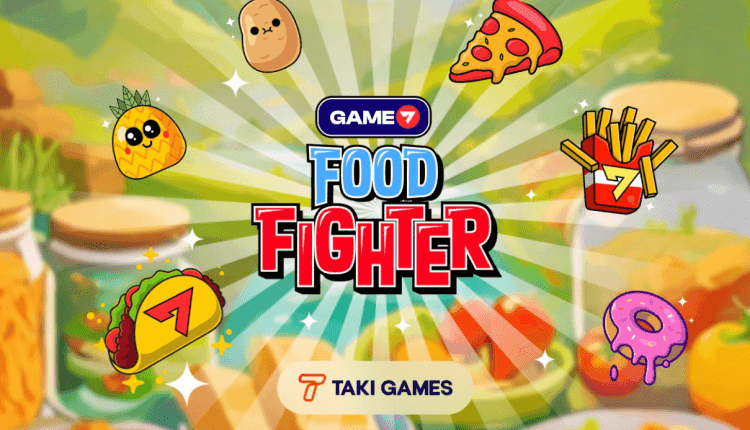The gaming world has started to influence industries far beyond entertainment, and restaurants are no exception. As the lines between digital and physical continue to blur, restaurants are adopting ideas from games and apps to solve some of their most pressing challenges. These include customer retention, loyalty, and staying top of mind in a highly competitive market.
Games and apps have long faced similar issues around how to attract users and keep them coming back. Over time, they’ve developed highly effective tools to address these challenges. Now, restaurants are starting to apply those same tools - not by building full-scale games, but by integrating game-like features into everyday operations and customer interactions.

How Restaurants Are Using Gamification
Early Examples of Gaming in Restaurants
According to a recent report by Konvoy, restaurants have experimented with games in the past, sometimes with surprising results. One of the most well-known examples is Burger King's release of "Sneak King" in 2006. It was a stealth-based game where players delivered food without being seen, sold for a small additional charge with a meal. Despite average reviews, it sold over 2.7 million copies and has become something of a pop culture reference point.
KFC and Wendy’s followed with their own attempts. KFC created a dating simulator called "I Love You, Colonel Sanders!" which received largely positive feedback. Wendy’s launched "Feast of Legends," a tabletop roleplaying game (RPG) that was featured on the streaming show Critical Role, though it drew mixed reactions from fans.
These early experiments were more about grabbing attention than long-term engagement. As the hype around branded games and the metaverse faded, restaurants began shifting toward more sustainable and practical uses of gaming principles.

How Restaurants Are Using Gamification
How Gamification Is Being Used Today
Rather than building full games, many restaurants are now using gamification in simpler ways. This means applying features like points, levels, challenges, and rewards to drive repeat visits and build loyalty. These tools are designed to keep people coming back, much like the mechanics used in mobile games and apps.
Swarm, an app from Foursquare, uses a check-in system that rewards frequent visitors. One of its most well-known features is the “mayor” title, which goes to the person with the most check-ins at a given location. This kind of friendly competition can encourage repeat visits while giving restaurants useful insights into their customers’ habits.

How Restaurants Are Using Gamification
Rewards Systems That Drive Engagement
Rewards programs have proven to be one of the most effective uses of gamification. OpenTable, a restaurant reservation platform, offers points for every reservation made. This encourages users to book in advance, helping restaurants manage demand and gather more data about their guests.
Starbucks has been using gamification for years. When its rewards program launched in 2009, customers advanced through levels based on how often they checked in. In 2016, the system was updated so that rewards were based on how much customers spent. This change helped the company better align its reward structure with its business goals while keeping the sense of progress that customers enjoyed.
Another example is Devour, a platform that links in-game achievements to real-world rewards. If a player wins a round in a game like PUBG, they might earn a free chicken dinner from KFC. It’s a creative way to connect gaming activity to restaurant promotions, and it allows brands to reach customers through the platforms they already spend time on.

How Restaurants Are Using Gamification
Using Leaderboards to Encourage Participation
Restaurants have also seen success using leaderboards to spark competition among customers. In one case, Chipotle teamed up with the fitness app Strava to run a challenge across 25 cities. Participants competed for the chance to win free Chipotle bowls for a year. In Arizona, two participants ran for over 40 hours straight in a close contest that drew public attention. This kind of campaign doesn’t just reward a few customers - it also generates social buzz and reinforces the brand’s presence in local communities.

How Restaurants Are Using Gamification
What’s Next for Gamification in Restaurants
As more tools become available, especially in areas like artificial intelligence, the ways restaurants can apply gamification will continue to expand. AI is already being used to automate workflows, gather feedback from customers, and suggest improvements to menus or service. According to Applovin, a mobile app platform, 88% of marketers are using AI daily, and 69% are integrating it into core business operations.
Another emerging trend is hyper personalization. Just as games are learning to tailor quests and challenges to individual players, restaurants can use customer data to create more personalized reward programs. Instead of generic promotions, customers could receive offers based on their favorite dishes or past behavior.
Influencer marketing is also seeing renewed interest, particularly as games and apps increasingly use influencers to reach new audiences. Restaurants can benefit from choosing influencers who reflect their brand values and using them to connect with potential customers in a more relatable and trustworthy way.

How Restaurants Are Using Gamification
Final Thoughts
The restaurant industry is learning from the gaming world in smart and subtle ways. While early efforts focused on creating attention-grabbing games, the lasting value has come from applying proven game mechanics to everyday interactions. Whether through rewards, check-ins, competitions, or personalized offers, these strategies help restaurants improve engagement, gather data, and build loyalty.

